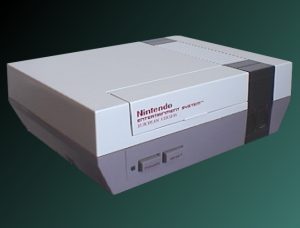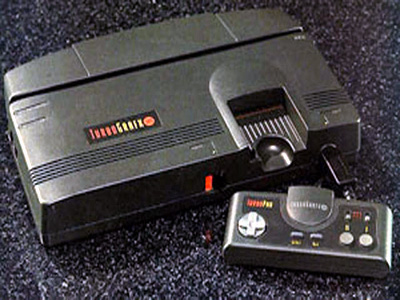Are we at, or passed, the point of calling some Video Game Consoles "Antiques"?
Most guys (and some girls) want that sweet muscle car from the 1960s, gleaming in the sun, not a scratch on it, engine roaring, a real head turner. When you visit someone's house and see a grandfather clock from the 1800s and hear the familiar chime coming from it at the top of the hour, or the perfectly timed "Tick Tock", you have no problem appreciating the craftsmanship. Do old video game consoles have the same effect on you when you see them? Do your friends (or family) appreciate the nostalgia that goes along with an "ancient" console? This begs the question, are there now antique video game consoles?
Most guys (and some girls) want that sweet muscle car from the 1960s, gleaming in the sun, not a scratch on it, engine roaring, a real head turner. When you visit someone's house and see a grandfather clock from the 1800s and hear the familiar chime coming from it at the top of the hour, or the perfectly timed "Tick Tock", you have no problem appreciating the craftsmanship. Do old video game consoles have the same effect on you when you see them? Do your friends (or family) appreciate the nostalgia that goes along with an "ancient" console? This begs the question, are there now antique video game consoles?
Dictionary.com defines "Antique" the following way:
an·tique /æn'tik/ Show Spelled [an-teek] Show IPA adjective, noun, verb, -tiqued, -ti·quing.
–adjective
1. of or belonging to the past; not modern.
2. dating from a period long ago: antique furniture.
3. noting or pertaining to automobiles approximately 25 years old or more.
4. in the tradition, fashion, or style of an earlier period; old-fashioned; antiquated.
5. of or belonging to the ancient Greeks and Romans. 6. (of paper) neither calendered nor coated and having a rough surface.
7. ancient. –noun
8. any work of art, piece of furniture, decorative object, or the like, created or produced in a former period, or, according to U.S. customs laws, 100 years before date of purchase.
9. the antique style, usually Greek or Roman, esp. in art.
10. Printing . a style of type.
–verb (used with object)
11. to make or finish (something, esp. furniture) in imitation of antiques.
12. to emboss (an image, design, letters, or the like) on paper or fabric. –verb (used without object)
13. to shop for or collect antiques: She spent her vacation antiquing in Boston.If we use this as a reference, we can pull out a couple of entries that we can use to relate to video games:
- noting or pertaining to automobiles approximately 25 years old or more.
- any work of art, piece of furniture, decorative object, or the like, created or produced in a former period, or, according to U.S. customs laws, 100 years before date of purchase.
 |
| 1969 - Ford Mustang |
I tend to lean toward the car analogy. Most pieces of antique furniture aren't plugged in, are not electronic and we don't interact with them in the way we do a video game console. Cars on the other hand are physically used (and sometimes abused), have many many moving parts and for the most part, do have some sort of electronic component. This is all open to discussion, which is, of course, the point of this blog. Using the car as our benchmark, then I would say any video game system that is older than 25 years old is considered an antique.
Let's time travel...
So, 25 years ago puts us at 1985. Let's see what was happening in 1985.
- Ronald Reagan was in his second term as President of the USA
- Gorbachev becomes the leader of the Soviet Union
- TWA flight 847 was hijacked
- Academy Award for Best Picture "Out of Africa"
- Grammy Award for Record of the Year "We Are the World"...USA for Africa
- Top Selling Movies in the USA: Back to the Future, Beverly Hills Cop, Rambo
- Super Bowl Winner:San Francisco 49ers
- World Series Winner: Kansas City Royal
Seem like a long time ago? I mean really...the Kansas City Royals were World Series Champions!
 |
| NES - Released in 1985 |
In the video gaming world, the Nintendo Entertainment System (NES) was released in the US in October of 1985.
There are few industries that have products that become out dated more quickly than the electronics industry. When was the last time you used a VHS? Are you already upgrading your DVDs to Blueray? How about your desktop computer...do you even have one anymore? Have you replaced it with a smaller and more powerful laptop?
With all of this in mind, I don't think it is wrong to call some consoles antiques. I also think that 25 years is more than enough time, and I'm sure some may argue that 25 years for consoles is too much time.
Let's take a look at the release dates of our most favorite consoles and see where they stack up when labeling them as antiques or not.
Obviously there are a number which fit right into the "Antique" category:
- Atari 2600 (VCS) - 1977 (October)
- Magnavox Odyssey 2 - 1978
- Intellivision - 1980
- Vectrex - 1982
- Colecovision - 1982
- Nintendo Entertainment System - 1985
 |
| NEC TurboGrafx 16 - Released in 1989 |
- Sega Master System - 1986
- Sega Genesis - 1989
- TurboGrafx 16 - 1989
Worth mentioning is the Super Nintendo is approaching the "Classic" group as it was released in 1991.
Just like cars, there are also different "models" of almost all video game consoles. The Atari 2600 has multiple models, the Intellivision has two models as does the NES. Even modern systems like the PS2 have more than one version of the console. Each model would be judged by its own release date and slotted into the appropriate category.
Does having an antique video game system mean anything different than having an "old" system? Well, maybe not, but if you are a seller, then perhaps marketing it this way could increase your profit slightly (most likely not, as people who are buying know the relative time the console was released). All in all, it's more for fun, for discussion and for something to write and comment about.
I, for one, know that I'm going to go use my antique Intellivision system in a little while...



